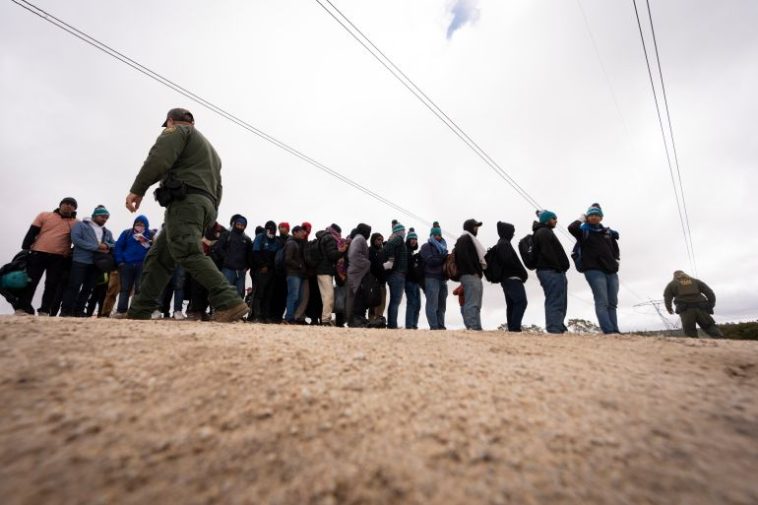Departing from Venezuela a year ago on a quest for better opportunities, Yessica embarked on a journey covering more than 3,000 miles towards the United States. Pregnant at the time, she trudged through her journey with a small fortune of savings, battling the physical strain of travel and external threats. Yessica’s traveling companions included her three children, spouse, brother, and mother, collectively they experienced the length and breadth of countries like Colombia, Panama, Costa Rica, Nicaragua, Honduras, Guatemala and finally Mexico. These words come from a 34-year-old mother, currently seeking shelter in Tapachula, a city located in the Mexican state of Chiapas.
Yessica recounts her struggles, ‘Symbol of weakness, our journey was surely a daunting one, but nothing compares to the hardships we faced upon entering Mexico.’ She details a frightening episode of being held hostage and forced to pay $100 for each family member by their kidnappers. It cost the family $800 in total to secure their release from the captivity of the organized crime group. In the present time, they linger in hope for a notice from the U.S. government granting them an appointment to solicit asylum.
During the recent summer, the count of unauthorized entries into the United States saw an unprecedented rise, particularly among immigrants from Venezuela, Ecuador, Honduras, and Guatemala. Official data paint a staggering picture: as of now in 2024, there have been 828,000 crossings, a number that surpasses the total crossings recorded for the entire year of 2023. These individuals are attempting to escape violence, extreme poverty, and the mounting impacts of climate change. Children, unfortunately, represent a significant proportion of these crossings, totaling around 97,000 this year.
Father César Cañaveral, the priest in charge of the Belén Migrant Shelter in Tapachula, identifies the surge in hope among people as a primary driver of the increase in migrations past the 100% mark. Similar sentiments are echoed by fellow migrants, like Javier, a 37-year-old Venezuelan. Speaking for many, he explains that their motivation stems from the desire to secure a prosperous future for their children.
Javier has been in Tapachula for a fortnight, following his expulsion from Chile where he had been working for five years. He can often be found interacting with his fellow nationals in Tapachula’s central park, which is located beside a local church.
An escalation in conflicts among criminal groups has put the border city in a state of unrest. Incidents of murders, extortion, and abduction are commonplace now. A chilling example is the recent discovery of two Salvadoran migrants, found dead from gunshot wounds in a sugarcane field. Responding with demonstrations and protests, various organizations and churches express their revolt against this escalating violence. Father Cañaveral voices this sentiment, insisting that such abuses and deaths of the ‘poorest of the poor’ are unacceptable.
A group of three young men, aged 25, 27 and 30 years old, disembarks from a raft on the banks of the Suchiate River, the natural divider between Mexico and Guatemala. Fear is evident in their hasty steps. When queried, they only confirm they are Venezuelans escaping the country due to the political crisis post the recent elections.
To address the spike in violence in recent weeks, Mexican authorities have increased their vigilance by setting up additional checkpoints at the city’s exits and at the roads connecting to nearby municipalities.
An established checkpoint by the National Migration Institute is noticeable beside the guards. Their agents recently intercepted a group of people trekking along the roadside and ushered them into a van.
A 36-year-old Venezuelan woman named Yolimar steps out of the detention center, her face marked with evident distress and exhaustion. Despite her tough predicament, she playfully interacts with her children, ensuring they see their arduous journey as an ‘adventure’.
The shelters in the city, including the Belén Migrant Shelter, are packed beyond their limits. Despite a maximum capacity of 150, the shelter houses 270 individuals, and still more await assistance outside. According to Father Cañaveral, the migrant influx shows no signs of waning with an increase of almost 100% compared to the previous year.
Despite the concerning number of migrants, the infrastructure in the region is ill-equipped to accommodate or provide sufficient aid to transiting individuals. A notable section of these migrants are forced to survive on the streets due to lack of space. Increasingly, these individuals are contemplating making Mexico their home and filing for refugee status in Mexico.
Measures on the south border have helped to disperse the concentration of migrants in border towns. However, it fails to spare those escaping their homelands from the inherent perils of their journey. Another ordeal they must face is the utter ambiguity surrounding the appointment date and their subsequent responsibility to reach the specified border post by themselves.
This void of information surrounding immigration processes is exploited by drug traffickers, Mexican authorities and unscrupulous individuals aiming to capitalize on the vulnerable migrants. A recent instance is a hoax message about a caravan organized by the Episcopal Conference and the US Embassy in Mexico circulating in WhatsApp groups, a claim both entities categorically denied.
Omar, a Colombian recently arrived in Tapachula, surmises the immigration process in his own way, ‘I reckon that a truck from the Immigration department will transport us to the border once our appointment date is issued.’ His puzzlement reflects the sentiment many new immigrants face when endeavouring to navigate the complex Mexican immigration system.


